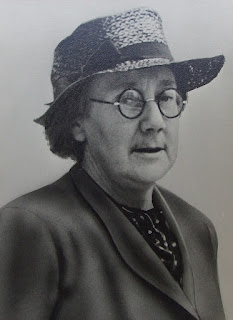On October 19th, The Royal Society in London is organising a major update of Wikipedia pages and entries for women in the field of science. The event is part of the annual celebration of Ada Lovelace who worked with the mathematical engineer Charles Babbage on his analytical engine. Her notes include the first recognised algorithm which could be processed by a machine; for this reason she is sometimes considered to be the world's first computer programmer. Ada Lovelace Day aims to raise the profile of women in the fields of technology and science whose work both in the past and today is not recognised or celebrated. Of course, science includes medicine, and Ireland has had a number of famous female physicians and surgeons, many of whom are largely forgotten today. Of the three women whose medical careers are detailed below, only one – Dr Kathleen Lynn has her own Wikipedia entry and that consists only of four short paragraphs. Tell us who you would choose to be added to the editing session in the comments.
In 1841 the existence of tuberculosis as an epidemic was recognised in Ireland, and by 1904, it accounted for 16% of all deaths in the country. The history of the fight against TB in Ireland in Ireland is dominated by two men, Dr Noel Browne and Dr James Deeny, both of whom did contribute a huge amount to the fight against the infection. But it was a woman by the name of
Dr Dorothy Stopford Price who arguably made the largest contribution in the battle against tuberculosis in Ireland and who was instrumental in its eradication as an epidemic.
 |
| Dorothy Stopford-Price |
Before the introduction of effective antibiotics, Price introduced the BCG vaccination to Ireland in 1937, vaccinating children in St. Ultan's Hospital. She also researched and published widely on tuberculosis in children and any of her articles appeared in peer reviewed journals such as the British Medical Journal and the Irish Journal of Medical Science. She also wrote a standard textbook on childhood TB, a copy of which is held by this College. In 1942, Dr Price was instrumental in the founding of the Irish Anti-Tuberculosis League, although the society was sabotaged by the Catholic authorities who disagreed with many of its policies. Nevertheless the league was the impetus for the foundation of a more effective TB policy in Ireland, and in 1948 Dr noel Brown appointed a consultative council on TB which was chaired by Price who was by then an acknowledged international expert on childhood tuberculosis. The net result of this council was the mass rollout of the BCG vaccine across Ireland, something that she had been advocating for ten years. Dorothy Stopford Price died from a stroke related illness in 1954, and her pioneering contribution to Irish medicine was largely forgotten.
Brigid Lyons Thornton was born in Roscommon and was deeply involved in Irish nationalism. In 1922, she became the first commissioned woman in the Irish Army serving as a medical office. She was demobilised in 1924, suffering from pulmonary tuberculosis. She spent some time convalescing in Nice where she met her husband Captain Eddie Thornton, and also spent time recovering in Switzerland. On her return to Ireland Dr Thornton studied for a diploma in public health in UCD. Her first appointment was in Kildare, working on tuberculosis and later worked in Cork. She was then appointed to the Dublin Corporation Public health Service and worked as a paediatrician. She also lectured in public health and was active in the Royal Academy of Medicine in Ireland. On her retirement she worked as a librarian in the Rotunda Hospital. Dr Thornton died in 1987 at the age of 91 and was given a military funeral. Her work in public health was an important part of the battle to eradicate tuberculosis in Ireland.
 |
| Kathleen Lynn |
One of the more well known female physicians in Ireland is
Dr Kathleen Lynn, although she is known more for her revolutionary activities than her medical work. She was born in Mayo in 1874 and graduated as a doctor in 1899. She became involved in suffragism, labour activism and Sinn Fein and became a member of the Irish Citizen Army. During the 1916 Rising, Dr Lynn was the Chief Medical Officer and was imprisoned in Kilmainham Jail for her actions along with her friends Constance Markievicz and Madeline Ffrench Mullen, the latter of whom she lived with for most of her life.
In 1919, Lynn, established St. Ultan's Hospital for infants which was the first medical clinic in Ireland which specialised in infant care. The hospital was also unique in that it was staffed and run almost entirely by women in its early years. Men were also employed but the hospital had a policy of favouring women doctors, possibly in response to the fact that women were routinely denied professional opportunities afforded to their male colleagues. Dr Lynn also supported Dorothy Stopford Price's work on tuberculosis and allowed the first BCG vaccinations to take place in the hospital. The hospital was also one of the first hospitals in the world to have a Montessori ward and Dr Lynn also established an outpatient clinic to advise mothers on the importance of hygiene. This College holds the administrative papers of St Ultan's, as well as Dr Lynn's own diary which provide a fascinating glimpse into forty years of social, cultural, political and medical life in Ireland. Dr Lynn was buried with full military honours on her death in 1955.
Tell us who you would choose to be added to the editing session, or indeed if you have any other suggestions.
Ruth Talbot, Library Intern